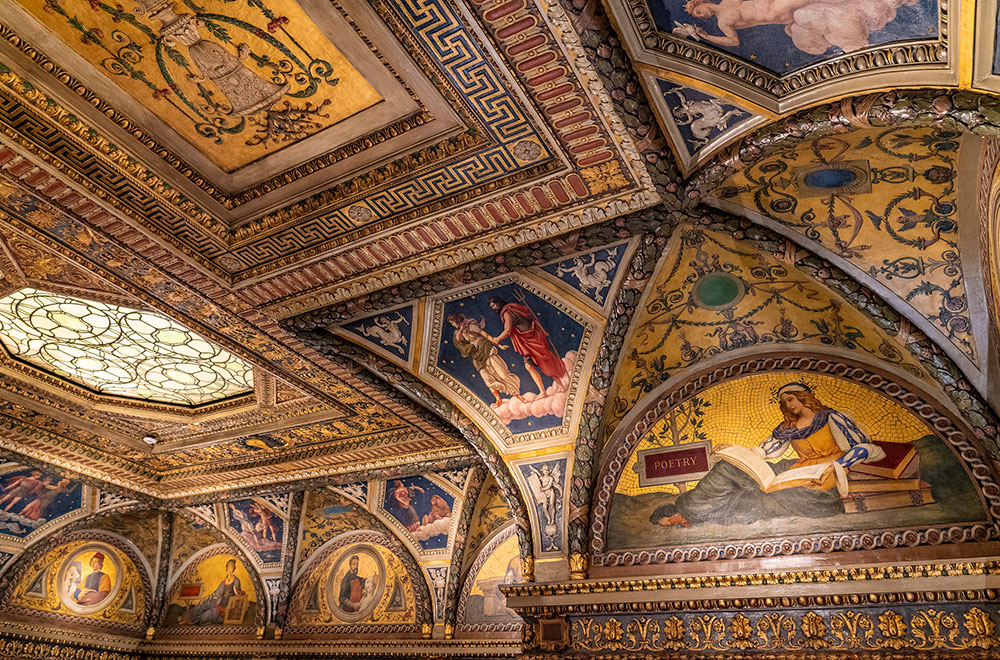
Jennifer Tonkovich, Eugene and Clare Thaw Curator of Drawings and Prints
The ceiling that soars above the bookshelves in this grand room is a complex creation. At the center is a large lay light, which was intended to let natural light into the room. It is surrounded by a cove ceiling joining it to the walls. The cove contains lunettes separated by spandrels, offering abundant surfaces for painted and stuccoed decoration.
Charles Follen McKim recruited the artist Harry Siddons Mowbray to develop the decorative program for the ceiling. Morgan, McKim, and Mowbray had been involved in the founding of the American Academy in Rome. All three had a deep appreciation of Renaissance culture that strongly influenced their vision.
Mowbray had carefully studied the great Roman villas and their interior decorative schemes, including their use of gold and stucco. For the lunettes, he chose reclining female figures representing the arts and sciences, based on sixteenth-century models. These alternated with portraits of male architects, painters, printmakers, philosophers, and others, from antiquity to the Renaissance, whom Mowbray selected to represent the leading contributors to Western civilization. To the right of the entrance is William Caxton—the first English printer. Originally, a lunette with Johannes Gutenberg represented the field of printing, but Morgan had recently acquired a collection containing thirty works by Caxton and so Gutenberg’s portrait was replaced.
Mowbray completed the ceiling design by placing the twelve zodiac signs in the spandrels. The zodiac was an important part of Renaissance culture, but it also had personal significance for Morgan, who was a member of a private dining association known as the Zodiac Club.
